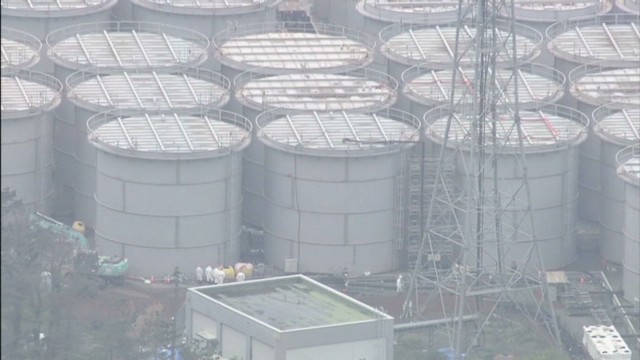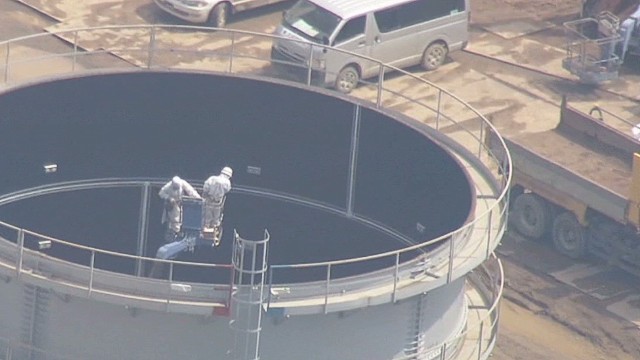Story highlights
- Operation to clean up irradiated areas around Fukushima nuclear plant continues
- Original 20-kilometer (12-mile) exclusion zone around crippled facility remains
- Residents only allowed access to outer parts of this area for limited periods
- New radioactive leaks at plant continue to cause concern two and a half years on
"You're listening to Fukushima FM." The cheery jingle on the radio reminds you of a different time in this part of eastern Japan, a different world that existed before March 11, 2011.
Driving past houses that residents can no longer call home, you can still see sandbags holding down tarpaulins on damaged roofs. They're the result of the devastating earthquake and tsunami more than two years ago, and repairs the owners have not yet been able to carry out.
We're inside the original 20-kilometer (12-mile) exclusion zone, an area completely evacuated after the tsunami knocked out vital cooling systems for three reactors at the Fukushima Daiichi nuclear plant, causing them to melt down and emit radioactive material.
Residents can now return to certain parts of the outer exclusion zone but only during the day. The government does not want to run the risk of accumulative radiation exposure if people stay for a full 24 hours.
By the side of the road we pass along, teams of workers are clearing the ground of radiation and have been since the summer of 2011. It's a colossal task that involves painstakingly removing the top layer of soil and grass to remove as much absorbed radiation as possible.
The government-funded operation will have cost $1.5 billion by the end of this fiscal year, according to the Japanese government. On any given day up to 8,000 people are working on the clean-up around Fukushima Prefecture.
More than a year ago, the workers here wore full protection suits, today they simply wear gloves and the basic face masks you can see anywhere in Japan -- a sign that the radiation level here has dropped.
Thousands of industrial-size black bags hold the contaminated soil. They are lined up in fields, waiting for their final resting place -- wherever that may be. This is a reminder that the problem of what to do with radioactive water at the crippled Fukushima plant is not the only storage issue this country has to deal with.
During the day, the steady volume of traffic in this outer part of the exclusion zone belies the invisible threat that still exists. It's a threat that two-and-a-half years later has residents wondering when, or even if, they will be able to move back home.











